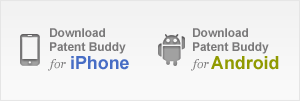METHOD FOR REGULATING THE TEMPERATURE OF A HOT ISOSTATIC PRESS, AND HOT ISOSTATIC PRESS
Germany Patent
Stats

Importance

| DE Family Size
|
Non-US Coverage
|
Abstract
Die Erfindung betrifft ein Verfahren zur Temperierung einer heiß isostatischen Presse und eine heiß isostatische Presse, bestehend aus einem Druckbehälter (1) mit innen liegendem Beladungsraum (19) und dazwischen angeordneter Isolierung (8), wobei innerhalb der Isolierung (8) Heizelemente (4) und ein Beladungsraum (19) mit einer Beladung (18) angeordnet ist, wobei zumindest der Beladungsraum (19) zur Ausbildung eines Konvektionsspaltes (28) mit einer Konvektionshülse (27) umgeben ist. Die Erfindung für das Verfahren besteht darin, dass im Inneren des Druckbehälters (1) und/oder des Beladungsraumes (19) zur Bildung einer Rotationsströmung (23) über zumindest eine Düse (13) Fluid eingedüst wird und sich dabei mit dem dortigen Fluid vermischt und dass gleichzeitig das Fluid einen Zirkulationskreislauf (29) um die Konvektionshülse (27) ausgebildet und aus dem Konvektionsspalt (28) in den Beladungsraum (19) eintritt. Die Erfindung für die heiß isostatische Presse besteht darin, dass innerhalb des Druckbehälters (1) zumindest eine Leitung (12) mit Verbindung zu zumindest einer Düse (13) im Inneren des Druckbehälters (1) angeordnet ist, wobei der Austrittswinkel der Düse (13) zur Ausbildung einer Rotationsströmung (23) innerhalb des Beladungsraumes (19) geeignet ist und wobei die Leitung (12) mit einem Bereich des Druckbehälters (1) mit unterschiedlicher Temperatur verbunden ist.

First Claim

Family

- 15 United States
- 10 France
- 8 Japan
- 7 China
- 5 Korea
- 2 Other
Country Designations

Patent Owner(s)
| Patent Owner | Address |
|---|---|
| DIEFFENBACHER GMBH & CO KG | DE75031 EPPINGEN |
International Classification(s)

- [Classification Symbol]
- [Patents Count]
Inventor(s)
| Inventor Name | Address |
|---|---|
| GRAF MATTHIAS | 75031 EPPINGEN |
Cited Art Landscape
- No Cited Art to Display

Full Text

Legal Events

Matter Detail
 Update Public Data
Dismiss
Edit
Save
Update Public Data
Dismiss
Edit
Save
Renewals Detail
 Edit
Save
Edit
Save
Add to Portfolio(s)
To add this patent to one, or more, of your portfolios, simply click the add button.
This Patent is in these Portfolios:

Add to additional portfolios:

Note
The template below is formatted to ensure compatibility with our system.
Provide tags with | separated like (tags1|tags2).
Maximum length is 128 characters for Customer Application No
Mandatory Fields * - 'MatterType','AppType','Country','Title','SerialNo'.
Acceptable Date Format - 'MM/DD/YYYY'.
Acceptable Filing/App Types -
- Continuation/Divisional
- Original
- Paris Convention
- PCT National
- With Priority
- EP Validation
- Provisional Conversion
- Reissue
- Provisional
- Foreign Extension
Acceptable Status -
- Pending
- Abandoned
- Unfiled
- Expired
- Granted
Acceptable Matter Types -
- Patent
- Utility Model
- Supplemental Protection Certificate
- Design
- Inventor Certificate
- Plant
- Statutory Invention Reg
Advertisement
Advertisement
Advertisement

Recipient Email Address
Recipient Email Address
Comment
Recipient Email Address
Success
E-mail has been sent successfully.
Failure
Some error occured while sending email. Please check e-mail and try again!
Important Notes on Latency of Status data
This Status indicator is an estimation based on the relevant document kind code. As such, it status will only indicate "Published" or "Granted". Expired, lapsed or abandoned statuses are not available in this release. Please refer to the legal status information for more information.
This status should not be taken as legal conclusion. No representations are made as to the accuracy of the status provided. Please consult a legal professional before relying on this status information.
Important Note on Priority Date data
This priority date is an estimated earliest priority date and is purely an estimation. This date should not be taken as legal conclusion. No representations are made as to the accuracy of the date listed. Please consult a legal professional before relying on this date.
Only for Granted EP cases
EP validations represent the countries in which the EP patent may be in force. Data is based on reporting from the various EP contracting states. The reporting consistency can vary across the countries.

